#academic research
Text

In other news, JSTOR's new PDF viewer is here, designed to optimize your reading experience!
Learn more about the new changes.
15K notes
·
View notes
Text
WWC’s A Beginner’s Guide to Academic Research
We are pleased to present WWC’s A Beginner’s Guide to Academic Research!
This pandemic project has been over 2 years in the making and we hope it will greatly assist any of our readers who are eager to conduct in-depth research but may be at a loss where to start.
Go to the Guide Here
The guide is split into 6 parts:
Introduction and Table of Contents
Part 1: Getting Started
Part 2: Searching for Sources Online
Part 3: Evaluating Sources
Part 4: Navigating Academic Sources
Part 5: Recognizing Your Limits
Each portion of the guide has links to connect to the previous and next sections. While it is possible to view tumblr pages on phones and tablets through the app, we highly recommend viewing this guide via browser on desktop whenever possible. Tumblr page formatting is better suited for browsers and each section is very dense with information, which will make scrolling in the app or on your dashboard difficult.
Future FAQ/ Discussion:
As noted in part 5 of the guide, for the next two weeks, we will be keeping an eye on the notes for this post. If you have further questions or comments about academic research, drop them here and we will select the most pertinent to respond to in a later post.
If you find this guide helpful, we request that you consider tipping the moderators below for the work and time required from conception, to drafting, formatting and debugging. Their ko-fis are listed below:
Rina: https://ko-fi.com/arcanabean
Marika: https://ko-fi.com/5h1njuu
5K notes
·
View notes
Text
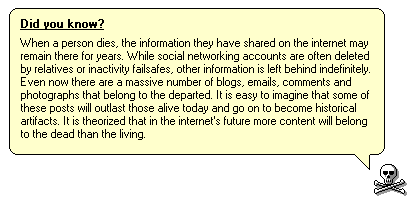
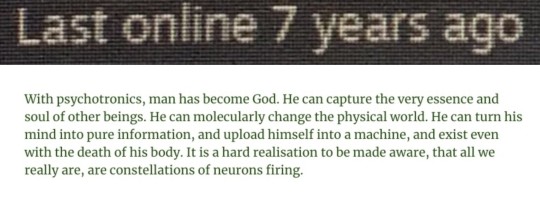




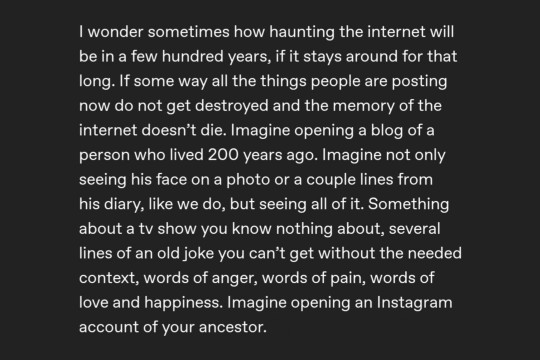
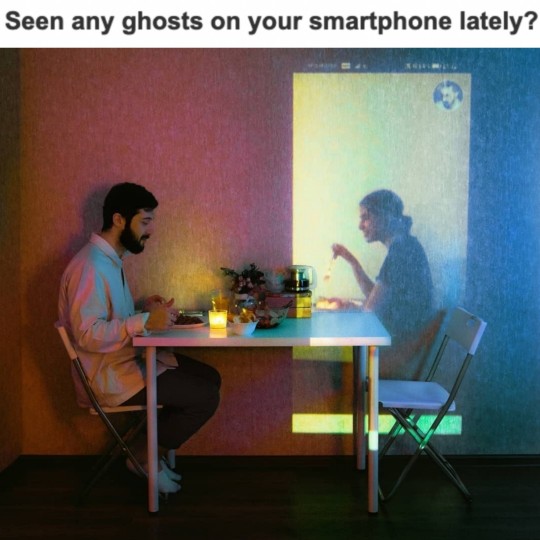
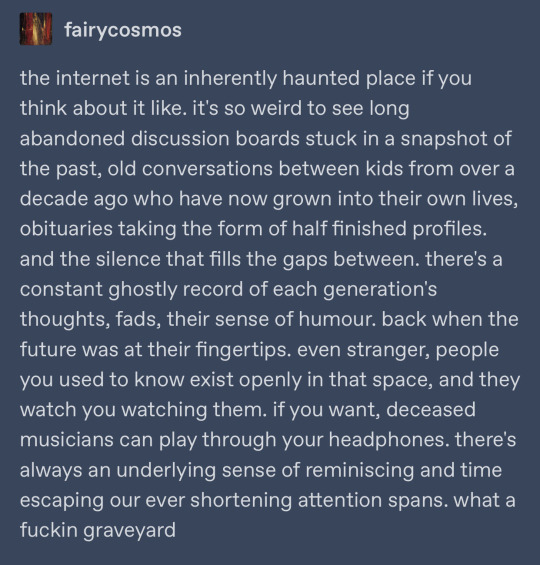
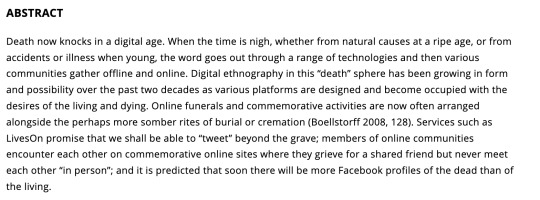
digital immortality | virtual e-morality
1. blueskies-bluescreens on tumblr 2. death, virtual grief and your digital footprint 3. online status of a steam community user 4. my journal dot com 5. & 7. hacked-wtsdz on tumblr 6. STurner4077 on twitter 8. the new forms of mourning by julie alev dilmaç 9. all the ghosts in the machine: illusions of immortality in the digital age 10. unknown 11. fairycosmos on tumblr 12. researching death online
#web weaving#compilations#parallels#words#cw death#emortality#digital immortality#internet#things of interest#cyberspace#academic research#transhumanism#immorality#god this fucks me up#if you're ever tired of being known for who you know#you know you'll always know me#and i'll always know you
31K notes
·
View notes
Text
My friends at University of Nicosia in Cyprus are doing a psychology research project, looking at the relationships between pet/plant ownership and optimism.
It takes about 3 minutes, and they're looking for as wide a sample as possible.
They are taking responses until April 15th.
Please help if you can!
480 notes
·
View notes
Text
Summary of results - Intercultural and cross-linguistic perspectives on the whump genre
Here is a summary of the results from the research thesis, "Intercultural and cross-linguistic perspectives on the whump genre"! This was part of my studying a Master of Contemporary International Studies. The research aimed to explore how whump-interested people connect with the whump genre cross-culturally and cross-linguistically.
Back in June/July this year (2023), I sent out a questionnaire open to any whump-interested person, and also invited interviews for bilingual whump-interested people. I've finally finished my thesis, and overall was awarded an A- for it!
The full thesis is available now to read on Academia.edu, and will also be available on IPU New Zealand's library website in January 2024.
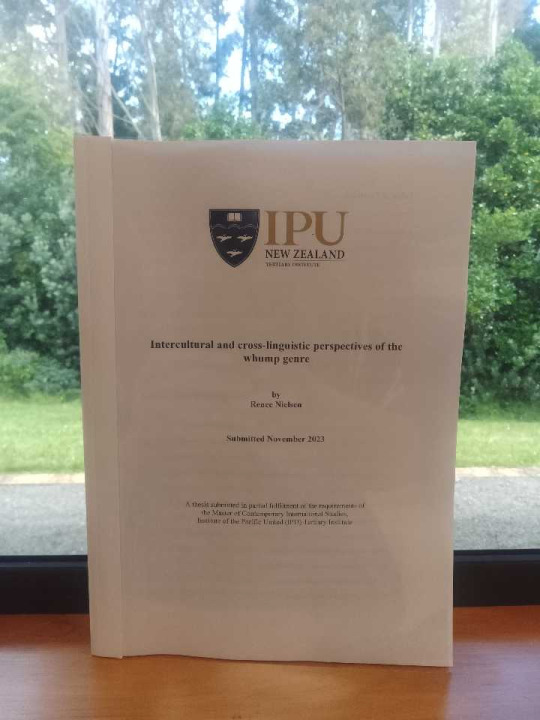
This research was approved for Human Research Ethics Clearance by the IPU New Zealand Research and Development Commitee on 3rd May 2023 (HREC-2023-05-03-01).
----
(NB: Due to there being an extensive amount of results, I've only summarised the key findings of the results section and a brief conclusion here. I've referenced page numbers for the full thesis if you'd like to read the extended version.)
-----
Summary of results (Questionnaire)
233 respondents | 92 different cultural/faith-based identities
The questionnaire was used to answer Research Question 1, "How do the aspects of Hofstede’s cultural dimensions and Schwartz’ universal human values reflect in the characteristics of whump genre identity?"
The questionnaire explored four themes associated with whump genre concepts - “agency,” “comfort,” “stoicism,” and “knowledge” - and found (p. 87):
For the theme of “agency,” questionnaire participants tended to perceive a greater importance for agency for the caretaker and whumper roles. This may be related to the caretaker and whumper role characters’ abilities to carry out their roles of caretaking and whumping respectively. While the cultural dimensions did not appear to be factors inherent to the theme of agency for the whumpee role in a whump genre story, this appeared to work towards supporting the cross-cultural enjoyment of whump.
For the theme of “comfort,” hurt comfort, physical comfort and long-term recovery may be more accommodating of cultural dimension dynamics and have a greater capacity to fully realise the goals of Schwartz’ values.
For the theme of “stoicism,” the way in which these dimensions can so diversely be applied to this theme suggests a cross-culturally applicable ground.
For the theme of “knowledge,” the balance between the certainty of a known whumpee and the uncertainty of an unknown whumper indicate variable tolerance of ambiguity within the whump genre. This suggests a cross-culturally applicable ground.
Summary of results (Interview)
The full results section for the questionnaire can be read in the full thesis (pp. 61-87).
-----
31 interviewees (15 spoken, 16 written) | 24 different languages
The interview was used to answer Research Question 2, "How do bilingual whump-interested people perceive the ability to convey themes of hurt comfort (a subgenre of whump) in different languages?"
The interview questions were categorised into themes:
Theme 1: Preferences for language when interacting with fiction
Theme 2: Comparisons of different languages’ abilities to convey physical and emotional pain
Theme 3: Limitations or difficulties experienced when conveying whump in, and across, different languages
Theme 4: Cultural, social, and/or linguistic reasons influencing pronunciation of “whump”
Following transcription of the interviews, a thematic analysis involving examining code co-occurences found (p. 123):
For “Theme 1: Preferences for language when interacting with fiction,” preferences tended to be associated with the availability of media, the ability to connect with the author’s intended meaning, and the level of ease and comfort with which interviewees could engage with the fictional media.
For “Theme 2: Comparisons of different languages’ abilities to convey physical and emotional pain,” interviewees’ comparisons highlighted differing ways of presenting and conveying pain in language, for example, through language features and words. Overall, interviewees felt that the languages which they were fluent in were generally equally capable of conveying physical and emotional pain, although different languages tended to approach the communicating of pain in different ways.
For “Theme 3: Limitations or difficulties experienced when conveying whump in, and across, different languages,” the perceived limitations and difficulties experienced across languages tended to be associated with difficulties in conveying semantic, pragmatic and cultural meaning across languages, and tended to stem from the differences between sociolinguistic approaches to communicating ideas in languages.
For “Theme 4: Cultural, social, and/or linguistic reasons influencing pronunciation of “whump,” common cultural, social and linguistic reasons for interviewees’ pronunciations of “whump” included how interviewees expected the word to sound based on their expectations of the letters in the phonological environment, the impact of a lack of having heard the word spoken aloud, sociocultural influences, intuition and language education.
Conclusions (brief exerpt from p. 130)
The full results section for the interview can be read in the full thesis (pp. 61-87). Interview transcripts (sensitive details filtered out) can be read in Appendix H (pp. 177-399).
-----
Research Question 1 explored cross-culturally applicable aspects of the whump genre. The findings suggested that themes of the whump genre accommodate variations in cultural social orientations and values, thereby enabling an interculturally common ground among whump-interested people.
Using qualitative research (interview), Research Question 2 explored how bilingual whump-interested people perceive and connect with hurt comfort themes across different languages. The findings suggest that multiple factors contribute to how bilingual whump-interested people engage with the whump genre, including but not limited to first and second languages as a tool to experience closely or otherwise distance the subject with, the availability of whump media in different languages, and manner of conveying aspects of pain and comfort through lexical, phonetic, grammatical and cultural aspects of language.
----
Thank you to everyone who participated in the research - the questionnaire and/or the interview! Your voices are all important in this kind of research, and are all very much appreciated!
225 notes
·
View notes
Text
How to set up a research journal
This is just one way you can set up a research journal but it's helping me tremendously so maybe it also works for you. My set-up is partially inspired by this video by Answer in Progress and I suggest you check out their curiosity journal.
Preparation
First you need a notebook. The trick is to find a notebook that you're not afraid to "ruin". We all want a really neat, aesthetic research journal, but the reality looks more like hasty scribbles, but that's okay, that's where the research breakthroughs happen.
I personally bought a cheap lined notebook from Søstrene Grene that I thought looked cute and put a sticker on it. That way I feel good about using it but I also don't mind when my handwriting gets messy because it was only like 3€.
You should also stock up on pens you like writing with. Different colour highlighters and post-its are also a good idea but not a must. Keep it cheap but comfortable.
Title Page
Here you should put down all the really important information: year, title, deadlines, word count, supervisors. Maybe add an inspirational quote to spice it up but keep it simple and relevant.
Key
This should either be your next or your last page. I personally use the last pages of my journal so I can add thing and find it easier. Your key is there to list abbreviations and symbols.
For example, I have different symbols for statistics, dates, new terminology, questions, breakthroughs, important notes and abbreviations for the most important terms in my field. It's shorter to write T9N than Translation.
The trick here is to have enough abbreviations and symbols to save time and effort but not so many that you constantly have to look back and forth between your page and key. They should be memorable and not easy to confuse.
Topic Mind map
If you hate mind maps you can skip this of course or use a different method but what helped me is to visualise all the topics that connect to my research project in a mind map. I then colour-coded the main groups of topics with my highlighters. It helps me to keep an overview on how many topics I need to do research on.
Proposal
If you're writing a thesis/dissertation it can be helpful to have a page set aside for your proposal and take some bullet point notes on methodology, chapter structure, research context, aims and objectives and think of some titles. You can also do this for your lit review and a list of works to include.
Hypothesis and Question Pages
I set aside four pages for this but you can adjust this to your needs. The first page is my hypothesis. It doesn't have to be fully formed yet, it can just be bullet points with five question marks. You can always revise and update it but it is important to keep an eye on what you're actually trying to find out.
The next idea is basically just stolen from Answer in Progress: a section for big questions, medium questions and little questions. These aren't necessarily hypotheses you aim to answer but questions you have about your topic that might be good to look into (maybe they lead somewhere, maybe they don't).
Research Notes
Now comes the big, fun part. Research notes are allowed to be a little messy but you should have some sort of system so you can actually find what you're looking for afterwards. I'm currently just looking at books and articles so that's what my system is based on. You can totally adjust this to include other forms of research.
What I do is that I put down and underline the author and title of my source. Underneath that I use my highlighters and mark the topic of the paper based on how I colour-coded them in my mind map. You might have to do this after you've finished reading. For example, if a text talks about censorship and dubbing in Germany, three of my topics, I will draw three lines in light blue, dark blue and red, the colours I chose for those topics. This way you can easily browse your notes and see which pages are talking about which topics.
When it comes to the actual research notes, I include the page number on the left and then take bullet point notes on whatever is relevant. These are often abbreviated and paraphrased but if something is especially important I will write down a full quote.
As mentioned earlier, I have a key of symbols I use so I can simply put down a '!' in order to differentiate a research breakthrough from a normal note. You can insert your own thoughts much more easily when you know you'll be able to tell them apart later on. At the end of each article, book or even chapter I write down my main takeaway.
Other Notes
This is your research journal and you can do with it what you want. I also added lists of films that might be relevant for my research, a list of databases and publishers to check for papers and tips on research strategy.
If you're working with interviews or surveys you could write down your questions. If you're nervous about your research you could include a list of reasons why your research project is important or why you're doing it. You can include a to-do list or a calendar to track meetings with supervisors. Anything that helps you with your research.
#gradblr#studyblr#studyspo#study tips#research#research journal#dissertation#thesis#thesis writing#academia#academic research#academic writing#journal#bullet journal
1K notes
·
View notes
Text








This is Meredith, a friend of mine who, whenever I encounter her at parties I always ask her about her research on this stuff. She's fat-positive and doing research for her PhD on weight-loss surgery in Canada. In her tweets she says she's looking to talk to people who are "engaged in fat politics, have had negative or harmful experiences in surgery", particularly cis men, trans and non-binary people, and BIPOC.
Meredith is one of the most gentle and kind people I know and I'm sure talking to her will be a wonderful experience. It seems like she could use more fat trans voices in her research, and I am sharing this with her permission, because I know there are a lot of people on tumblr who have a lot to say. Let your voices be heard!
Contact her at besseym at uoguelph dot ca, and signal boost!
#fat positive#weight loss#weight loss surgery#academic research#Canada#fat politics#fat#fat activism#fat acceptance
382 notes
·
View notes
Text
Research Study: Fandom & Generative AI still looking for participants!
I'm still recruiting research participants for my PhD dissertation study!!! If you've already participated, thanks so much! If you haven't participated yet, please consider responding to a quick survey, and sharing with your friends!
I'm interested in understanding fans' perspectives on and experiences with generative AI (text and image generation software). That means perceptions both positive and negative! However you feel about genAI, I'm interested in hearing from you. We're especially seeking diverse perspectives from underrepresented demographic groups of people.
If you're over 18, can speak/understand English, and are interested in participating you can learn more information and take the survey here. I've also made a FAQ post about the study that I've pinned to the top of the blog, and you can see more info on the shareable flyer below. You can also view posts on Twitter/X, Bluesky, and Reddit about the study and share info there! Spreading the word is greatly appreciated :)

The study is anonymous and voluntary, and you'll be asked about your fandom background, attitudes towards generative AI, and demographic information. The survey should take about 15-20 minutes, and you can skip over any questions you want. You can also elect to participate in a follow up interview, if you want to. The full details are on the consent form, which you'll be able to read before taking the survey! Feel free to reach out with any questions.
#fanfic#fandom#fanart#ai#art#writing#fan culture#fandom meta#fandom culture#fandom things#research#research study#fan fiction#fan art#fanfiction#ao3 fanfic#fic writing#artificial intelligence#technology#creative writing#creation#creativity#fandom polls#fandom research#fan studies#academic research#research survey#artists on tumblr#writers on tumblr#anime and manga
99 notes
·
View notes
Text
Just finished the first draft of my Anthropology thesis on Artist Opinions of Image-Generating AI. It is seventy pages😀
#maddytalks#writing#academic writing#academic research#thesis#anthropology#art history#college#academic paper
135 notes
·
View notes
Text

Today's view from Archiepiscopal Residence of Zagreb whose wall paintings, harmed by the earthquake, I had the opportunity to restore.
#art#dark academia#art history#historical art#dark academism#books and literature#europe#history#romantic academia#chaotic academia#chaotic academic aesthetic#academic disciplines#academic research#university#student#study#explore#adventure#field work#field trips#students#assignment#education#church#crypts#hidden secrets#harry potter#study aesthetic#conservation#restoration
503 notes
·
View notes
Text
Searching best practices on JSTOR
Hi Tumblr researchers,
As promised, we're going to dive into some best practices for searching on JSTOR. This'll be a long one!
The first thing to note is that JSTOR is not Google, so searches should not be conducted in the same way.
More on that in this video:
youtube
Basic Search on JSTOR
To search for exact phrases, enclose the words within quotation marks, like "to be or not to be".
To construct a more effective search, utilize Boolean operators, such as "tea trade" AND china.
youtube
Advanced Searching on JSTOR
Utilize the drop-down menus to refine your search parameters, limiting them to the title, author, abstract, or caption text.
Combine search terms using Boolean operators like AND/OR/NOT and NEAR 5/10/25. The NEAR operator finds keyword combinations within 5, 10, or 25 words of each other. It applies only when searching for single keyword combinations, such as "cat NEAR 5 dog," but not for phrases like "domesticated cat" NEAR 5 dog.
Utilize the "Narrow by" options to search for articles exclusively, include/exclude book reviews, narrow your search to a specific time frame or language.
To focus your article search on specific disciplines and titles, select the appropriate checkboxes. Please note that discipline searching is currently limited to journal content, excluding ebooks from the search.
youtube
Finding Content You Have Access To
To discover downloadable articles, chapters, and pamphlets for reading, you have the option to narrow down your search to accessible content. Simply navigate to the Advanced Search page and locate the "Select an access type" feature, which offers the following choices:
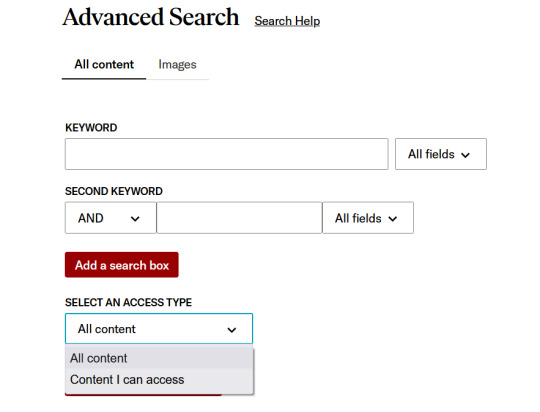
All Content will show you all of the relevant search results on JSTOR, regardless of whether or not you can access it.
Content I can access will show you content you can download or read online. This will include Early Journal Content and journals/books publishers have made freely available.
Once you've refined your search, simply select an option that aligns with your needs and discover the most relevant items. Additionally, you have the option to further narrow down your search results after conducting an initial search. Look for this option located below the "access type" checkbox, situated at the bottom left-hand side of the page.
Additional resources
For more search recommendations, feel free to explore this page on JSTOR searching. There, you will find information on truncation, wildcards, and proximity, using fields, and metadata hyperlinks.
#happy researching!!!#jstor#research#academic research#academic writing#academia#academic database#searching#higher education#students#colleges#university#learning#teaching#librarians#libraries#Youtube#studyblr#ref
2K notes
·
View notes
Text
Last Chance for Questions on our Academic Research Guide!
At the beginning of the month, Writing With Color published A Beginner's Guide to Academic Research.
Some of you might have questions or comments about academic research, researching for creative writing, or the guide itself. How did we do? Did we miss anything? We will be going over your questions in a Q&A post in the coming days.
Please enter your questions in the notes of this announcement post here!
Share this post with anyone who might be looking for help researching for a creative project or for school!
We'll catch up with you soon.
- WWC Research Guide team
#guides#research#academic research#reference#resources#creative writing#writeblr#writing advice#school#study guide
268 notes
·
View notes
Text
☆・✧Introduction to Writing a Professional Email✧・☆
"Every professor secretly wants to be Ms. Frizzle." -@myshoeisonthewrongfoot
Introduction to Writing a Professional Email
Writing an email is one skill that you will most likely need in your professional life either as a student or in your time in the workforce. However, you can also use these skills to write emails to experts in any given field when you have questions among other things. The applications are endless.
Rule One: Don’t Panic
If you are writing to someone for information there is a very solid chance that the response you are going to get is going to be something like “yeah sure -sent from my iphone 11:35:18 PM” if it isn’t closer to an automatic message informing you that the person is out of the office until a specific date.Those who care don’t matter and those who matter don’t care. If your grammar is coherent enough to be understandable and cohesive, they are going to care more about the content of your email than the structure and soundness of the message. So fear not, internet denizen, you are probably gonna kill it. Being professional, polite, and persistent will get you very far in most things, and this is no exception.
Subject Line
Whatever anyone tells you, your job here is to NOT get caught by someone’s spam filter. Summarize what you’re looking for in about 3 to 5 words, and you should be good. I generally like to start with [What is it?] [Specific topic it pertains to.] Want to ask a professional about how many different kinds of tigers there are?
Subject: Question about Tiger Species Statistics.
The [What is it?] helps give them an idea of what the email is about, and the specificity helps both keep you out of the spam filter and makes you sound purposeful.
Template
Writing an email isn’t particularly difficult once you get the hang of it, but when you’re first starting out, don’t be scared to use a template. Taking some of the thinking out of the process can do wonders for making you both comfortable as well as getting you most of the way there without having to struggle. No one is going to judge you if your email doesn’t look particularly original in structure because this is about the content. You don’t have to worry here about looking like you copied someone else’s homework, rather, it’s encouraged. If you were writing a haiku you wouldn’t worry about having the same number of syllables as everyone else. In the same vein do not worry about having the same professional email structure as everyone else. Emails are a means to an end, and there is no harm in viewing them that way.
I’ve written one out below for your convenience.
---------------------------------------------------------------------------------------------------
[Good morning,/ Good afternoon,/ Good evening,] ---> Header
[This is where you introduce yourself and provide relevant details about who you are. Are you a student with a question? Are you a professional in the field? Include that here. You may also want to include a thesis here about what you want in this introduction. That is likely going to resemble something like “I have a question about {topic} and would like to hear your advice/ input/ knowledge on the subject, if possible.” It may seem redundant to introduce yourself here when your name is also going at the bottom, but redundancy isn’t always a bad thing. This first paragraph is introducing yourself, the bottom is handing someone your business card.] ---> Introduction paragraph
[This is your substantive content. You can indent this if you like, but some software gets a little finicky with this process, and most people prefer a space between the paragraphs in an email anyway because it genuinely makes it easier for people to read. Keep the paragraphs concise, clear, and don’t sweat the small stuff.] ---> First body of the email.
[I usually use much shorter paragraphs in an email that you would in an essay. You’re generally not arguing a point or giving an in depth analysis in an email, so they shouldn’t be too beefy in the first place, but generally separating them by question or by thought process is a good idea.] ---> Second body of the email.
[And so on and so forth.] ---> Etc. body of the email.
[Best,/ Best wishes,/ Thank you,/ Thanks in advance, Kind regards] ---- Signature message
[Name O. Person] ---- Signature here
Stylistic Options
Some people insist there should be a colon at the end of the header portion, but in personal experience no one cares besides this one writing professor I had. However, if you wanna feel fancy with it, go for it. There are barely any rules to writing a professional email, but if it makes you a little less panicked to think you are performing a well guarded secret of professional email technique by using it, be the super spy you were born to be.
Bonus Sign Off Sentence
Additionally, no one thinks for more than five seconds about the signature message. Whether you use “Regards”, or “Thank you” this is linguistic furniture. You notice when it isn’t there, but you don’t think very hard about it when it is there. I use the exact same one every single time, and so does everyone else. Pick one that sparks joy for you. If you want, you can even throw a sentence right before it to tailor it to your specific desires a la:
---------------------------------------------------------------------------------------------------
[Body ends here.]
I genuinely appreciate everything you’ve done for me.
Regards,
Name O. Person
Email Signature
One way to elevate your professional email game is to create a signature in your email program. In gmail, it’s under general settings. You click add signature, pick a name for it, and it should open a formatting box. This allows you to create essentially a business card that will automatically be affixed to the bottom of your emails. It will go in place of putting your name at the bottom every time. You can get a little more fancy with the fonts and information in this section by including things like job title or graduating class. This can elevate your professional email game tenfold and make you look like you really know what you’re doing. Nearly every program for email management has some variation of this in the settings somewhere.
#witchcraft#school of roses#witchblr#academic research#academic essay#professional email#professional#jobs#student#university#student life#studyblr#college#studying
19 notes
·
View notes
Text
《Edit (11/13/23): here's where we address any misinformation/misconceptions that may be spread due to this post》

Come on, y'all. It takes like. Ten minutes. Listen to other plurals' voices and experiences. Here, I'll help. And here's even *academic research*, if you really need that. I'll even give ya a specific screenshot if you need a tl;dr.
-Vic🌞he/they
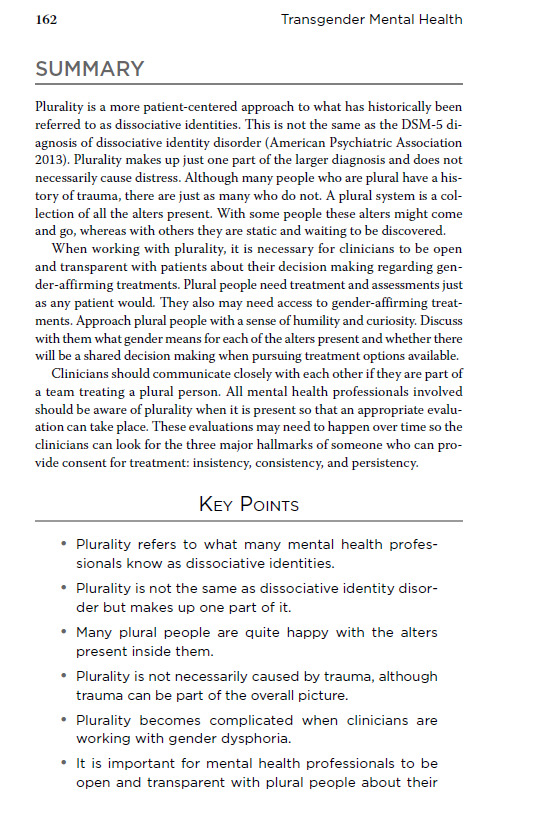
#bernie sanders#spittin facts#pro endo#mixed origin#syscourse#endotraumagenic#endo friendly#plural memes#memes#mental health memes#systems#plural gang#pluralpunk#academic research#debunking sysmeds#research#it's not that hard#and please pay attention to ppl's DNIs
49 notes
·
View notes
Text
I will never get tired of seeing academics publish articles in journals titled things like:
"Response to Dr. Wrong-Again: A Rebuttal"
"Academic Blorbo on Fancy Topic: Are They Really Saying What Professor Beardface is Saying?"
which is basically the academic way of being totally passive aggressive, disagreeing with someone publicly, and then putting it on your CV/resume.
and IDK I think it's beautiful that academics will go back and forth via journal articles, racking up more publications, all over interpretations of some dead person's text, and no one really wins.
it is why, for the millionth time, fandom wank and discourse is both exasperating and totally fine by me, because grown-ass academics with fancy titles and books published are doing exactly the same with non-fiction.
because academia is fan-non-fiction and we need to just own that.
#fan nonfiction#fanfiction#fanfic#phdblr#phd life#academia#grad school#dissertation stuff#academic stuff#academic research#academic writing
16 notes
·
View notes
Text
General rule of thumb when getting info from academics: hold reservation on putting too much stock on anything they talk about that isn't in their wheelhouse. Like if a guy who specializes in chemistry makes statements about history, stick those in the "ask a historian about this later" box.
132 notes
·
View notes